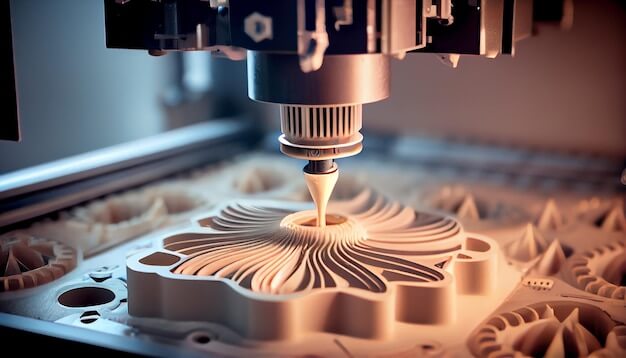Bronze type that can process Rivet
Phosphor Bronze
- Characteristics: High strength, excellent wear resistance, good elasticity.
- Applications: Springs, bearings, and parts requiring high wear resistance and elasticity.
Tin Bronze
- Characteristics: High corrosion resistance, good casting and machining properties.
- Applications: Marine components, bearings, and high-load parts.
Aluminum Bronze
- Characteristics: High strength, excellent wear resistance, superior corrosion resistance.
- Applications: Gears, propellers, and heavy-duty machinery parts.
Beryllium Bronze
- Characteristics: Very high strength, hardness, excellent fatigue resistance.
- Applications: High-performance springs, connectors, and parts requiring high elasticity and strength.
Manganese Bronze
- Characteristics: High strength, good corrosion resistance, good impact resistance.
- Applications: Marine fittings, bearings, and gears.
Challenges in Rivet CNC Machining
Material Hardness
- Issue: Bronze can be quite hard, leading to increased wear on cutting tools.
- Solution: Use tools with appropriate coatings and geometries designed for hard materials.
Heat Generation
- Issue: Machining bronze generates significant heat, which can affect both the tool and the material.
- Solution: Employ efficient cooling systems and proper coolant to manage heat.
Chip Formation
- Issue: Bronze tends to form long, stringy chips that can clog machinery and complicate the machining process.
- Solution: Use chip breakers on cutting tools and optimize cutting parameters to produce manageable chip sizes.
Tool Wear
- Issue: The abrasive nature of bronze can lead to rapid tool wear.
- Solution: Use high-quality, wear-resistant tools and regularly monitor tool condition to replace them as needed.
Precision and Tolerances
- Issue: Achieving high precision and maintaining tight tolerances can be challenging due to the material properties.
- Solution: Utilize high-precision CNC machines and implement rigorous quality control processes.
Surface Finish
- Issue: Achieving a smooth surface finish on bronze rivets can be difficult due to the material’s hardness and potential for heat-induced surface defects.
- Solution: Use appropriate finishing techniques such as bead blasting or polishing to achieve the desired surface quality.
Complex Geometries
- Issue: Machining complex geometries, especially on small rivet parts, can be challenging.
- Solution: Employ advanced CNC programming techniques and multi-axis machining capabilities to accurately produce complex shapes.
Fixture Design
- Issue: Properly securing small rivet parts during machining can be difficult.
- Solution: Design and use custom fixtures to securely hold parts in place during the machining process.
Material Variability
- Issue: Variations in bronze alloy compositions can lead to inconsistent machining performance.
- Solution: Standardize material sources and perform material testing to ensure consistency before machining.
Cost Management
- Issue: High tool wear and the need for advanced machinery can increase production costs.
- Solution: Optimize machining parameters, improve efficiency, and consider cost-effective tooling options.
Other Articles You Might Enjoy
- Rivets Production and Tack Welding in CNC Machining(chamfer Lesley)
Computer Numerical Control (CNC) machining is an advanced manufacturing process that uses pre-programmed computer software for controlling the tools' movement to create a specific product. The movement may include procedures…
- Unlocking New Possibilities in CNC Machined Titanium Medical Devices
Introduction to CNC Machined Titanium Medical Devices The prevalence of CNC machined titanium medical devices in the healthcare sector demonstrates their immense significance and usefulness. This technology furnishes an essential…
- CNC Aluminum Machining Services: Advanced Techniques for Perfect Parts
CNC Aluminum Machining Services In the current manufacturing landscape, CNC aluminum machining services play a pivotal role. CNC which simply translates to 'Computer Numerical Control', is an advanced technique used…









